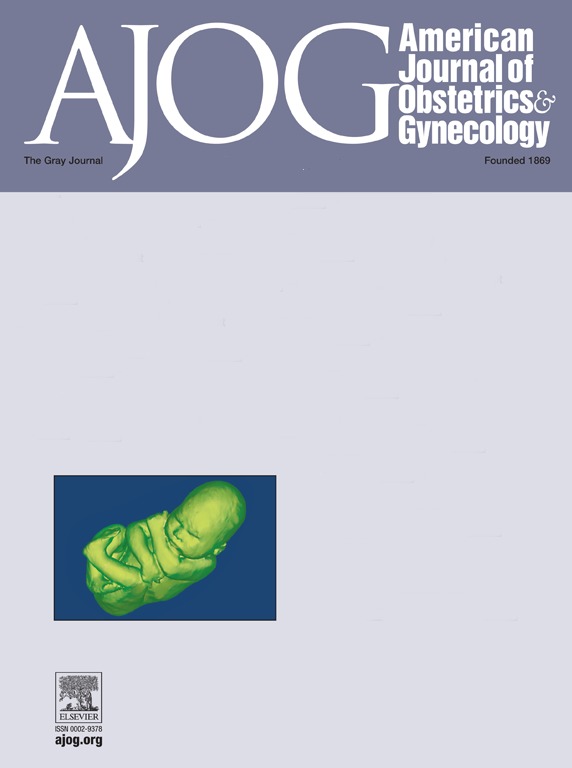在全国妇产科住院医师项目中纳入跨性别和非二元性别住院医师:需求评估。
IF 8.4
1区 医学
Q1 OBSTETRICS & GYNECOLOGY
引用次数: 0
摘要
鉴于越来越多的跨性别/非双性恋(TGNB)医学院学生被录取,本研究旨在评估目前TGNB实习生进入妇产科(OB/GYN)住院医师项目的优势和障碍,并找出改进的机会。研究设计一项在线调查于2023年5月至11月分发给美国认可的妇产科住院医师项目附属的医疗保健提供者。调查探讨了项目人口统计、人际互动、物理空间和性别确认护理的提供。对定量反应进行描述性统计和逻辑回归分析。主题内容分析用于审查开放式答复。结果在2023年认证的294个妇产科项目中,有127个参与,代表了美国所有地区。69%的受访者被确定为教师或辅助人员,57%的受访者表示他们已经参与住院医师计划五年或更长时间。27个项目(21.3%)在调查完成之前和/或完成时有TGNB住院医生,其中7个项目(6%)确定至少有一名非白人TGNB患者。123个项目(97%)同意妇产科项目有责任为TGNB住院医生提供包容性的工作环境,73个项目(57.4%)表示准备支持即将到来的TGNB住院医生。逻辑回归发现,在驻地有TGNB居民,向医疗保健提供者提供代词,并提供易于使用的性别中性浴室,与项目准备支持TGNB居民有关。定性分析确定了七个共同主题,探讨了为TGNB居民提供包容性工作环境的障碍和促进因素。尽管几乎所有的提供者都承认为TGNB居民创造一个包容的环境的重要性,但近一半的参与者认为他们的项目在这方面还没有做好准备。本研究确定了改善工作场所性别认同包容性的相关和可行的机会。建议总结在一个工具包中(附录B),用于建立一个支持性的工作环境。本文章由计算机程序翻译,如有差异,请以英文原文为准。
Towards the inclusion of transgender and non-binary residents among Obstetrics and Gynecology residency programs across the nation: a needs assessment.
OBJECTIVE
Given increasing numbers of matriculating transgender/non-binary (TGNB) medical students, this study aims to evaluate for current strengths and barriers towards inclusion of incoming TGNB trainees in obstetrics and gynecology (OB/GYN) residency programs and identify opportunities for improvement.
STUDY DESIGN
An online survey was distributed from May to November 2023 to healthcare providers affiliated with accredited OB/GYN residency programs in the United States. The survey explored program demographics, interpersonal interactions, physical space, and provision of gender-affirming care. Descriptive statistics and a logistic regression of quantitative responses were analyzed. Thematic content analysis was used to examine open-ended responses.
RESULTS
Among 294 OB/GYN programs accredited in 2023, 127 participated, representing all US regions. 69% of respondents identified as faculty or ancillary staff and 57% stated that they have been affiliated with their residency program for five or more years. 27 programs (21.3%) had a TGNB resident prior to and/or at the time of survey completion, of whom 7 programs (6%) identified having at least one TGNB individual who was a race other than White. 123 programs (97%) agreed that OB/GYN programs have a duty to provide an inclusive workplace environment for TGNB residents, and 73 programs (57.4%) felt prepared to support an incoming TGNB resident. Logistic regression found that having a TGNB resident at the residency, offering pronoun pins to healthcare providers, and providing easily accessible gender neutral bathrooms were associated with program readiness to support a TGNB resident. Qualitative analysis identified seven common themes exploring barriers and facilitators for providing an inclusive workplace environment for TGNB residents.
CONCLUSION
Although nearly all providers acknowledged the importance of creating an inclusive environment for TGNB residents, close to half of participants felt their programs were unprepared to do so. This study identifies relevant and feasible opportunities for improved gender identity inclusivity within the workplace. Recommendations are summarized in a toolkit (Appendix B) for residency programs working to build a supportive work environment.
求助全文
通过发布文献求助,成功后即可免费获取论文全文。
去求助
来源期刊
CiteScore
15.90
自引率
7.10%
发文量
2237
审稿时长
47 days
期刊介绍:
The American Journal of Obstetrics and Gynecology, known as "The Gray Journal," covers the entire spectrum of Obstetrics and Gynecology. It aims to publish original research (clinical and translational), reviews, opinions, video clips, podcasts, and interviews that contribute to understanding health and disease and have the potential to impact the practice of women's healthcare.
Focus Areas:
Diagnosis, Treatment, Prediction, and Prevention: The journal focuses on research related to the diagnosis, treatment, prediction, and prevention of obstetrical and gynecological disorders.
Biology of Reproduction: AJOG publishes work on the biology of reproduction, including studies on reproductive physiology and mechanisms of obstetrical and gynecological diseases.
Content Types:
Original Research: Clinical and translational research articles.
Reviews: Comprehensive reviews providing insights into various aspects of obstetrics and gynecology.
Opinions: Perspectives and opinions on important topics in the field.
Multimedia Content: Video clips, podcasts, and interviews.
Peer Review Process:
All submissions undergo a rigorous peer review process to ensure quality and relevance to the field of obstetrics and gynecology.

 求助内容:
求助内容: 应助结果提醒方式:
应助结果提醒方式:


